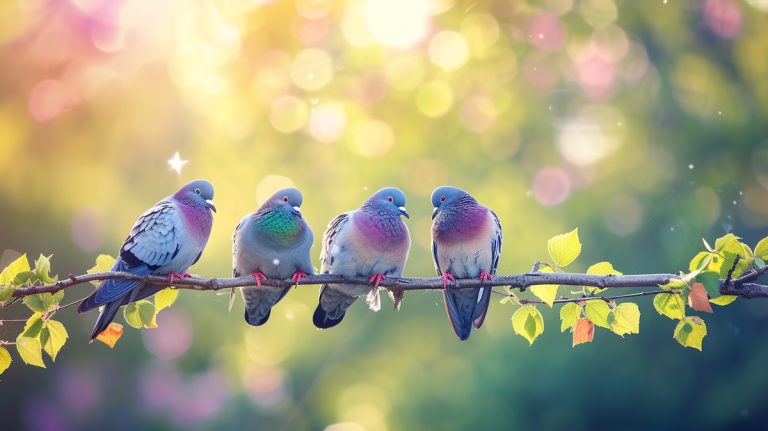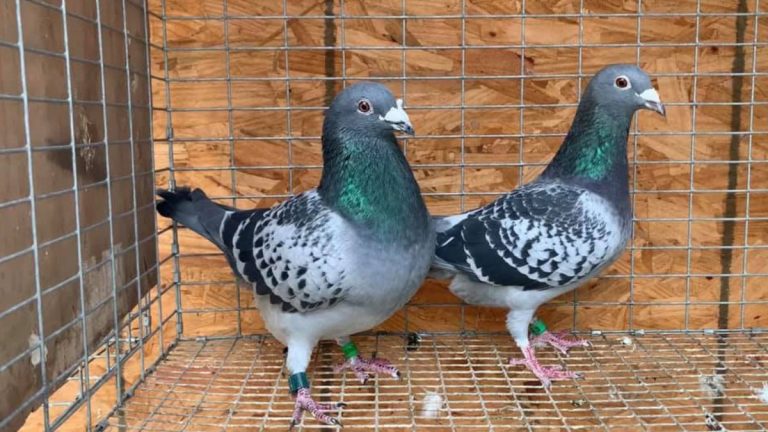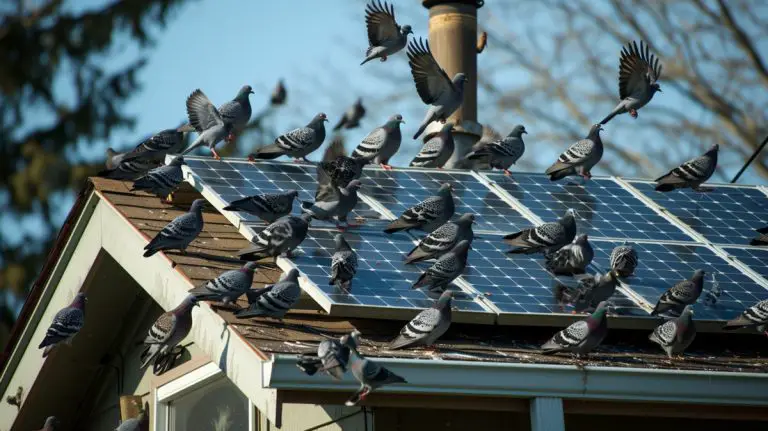Where Do Pigeons Go In The Winter?
Pigeons have captivated us with their unique behaviors and remarkable abilities for centuries. During summer, these birds are often seen soaring through the skies but as the temperature drops in winter, a different side of their behavior emerges.
Where do pigeons go in the winter? Wild pigeons search for cozy refuge in attics, garages, and eaves of buildings. They also nest in trees, rocks, and thick vegetation, and congregate in large flocks to retain and share body heat. Some pigeons may also travel short distances in search of food or shelter.
Read more to learn all about the fascinating behaviors and habits of pigeons during winter.
Where Do Pigeons Go In The Winter?
As winter draws near, wild pigeons search for warmer places to take refuge, such as attics, garages and vents on building eaves. These secluded spots offer a safe haven where they can huddle together to stay warm and dry.
Not only do they find shelter in human-built structures, but they also rely on the natural environment, nesting in trees, rocks, and thick vegetation. They line their nests with feathers, leaves, and twigs as an extra layer of insulation against the cold.
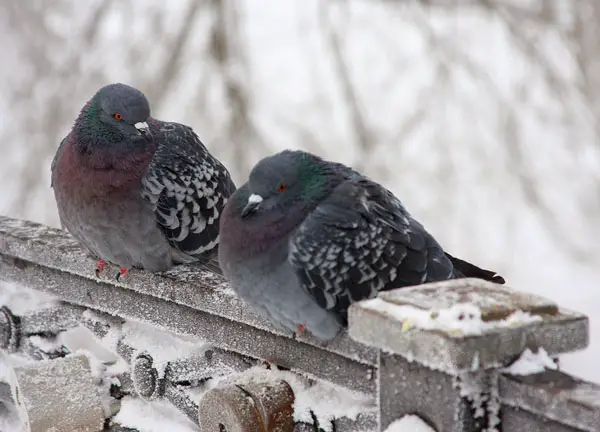
On the coldest winter days, pigeons form large flocks to share their body heat and conserve energy. You can see them perched on the sides of buildings or within branches of trees.
As we transition into the chillier winter season, pigeons alter their diet to adapt to the cooler climate.
While they usually consume a mix of grains, fruits, and vegetables all year round, during this time, they favor nuts, seeds, and insects. These foods help them sustain their energy levels while preserving optimal health throughout these months.
Do Pigeons Fly Away For Winter?
Unlike other migratory birds, pigeons find a suitable place to live and tend to stay there for the rest of their lives. This is particularly true for feral pigeons that have adapted well to urban life and live in cities worldwide.
However, some feral pigeons may travel short distances during the winter in search of food or shelter. This is particularly true in areas where the winter weather is harsh and food is scarce. In these cases, pigeons may fly to nearby urban areas or agricultural lands where food is more readily available.

Passenger pigeons were once the most abundant bird in North America and would migrate in enormous flocks, searching for food, shelter, and breeding grounds. However, passenger pigeon populations have drastically declined due to hunting and habitat destruction, and now these birds are extinct.
Another factor that may influence the movement of pigeons during the winter is the presence of other pigeons. Pigeons are social creatures, and they tend to congregate in large flocks. During the winter, flocks of pigeons may move to different areas to find food or shelter or to join up with other flocks.
Do Pigeons Get Cold In The Winter?
Pigeons are warm-blooded creatures, just like humans, so they do feel the cold. They can tolerate temperatures as low as -40 degrees Fahrenheit, but if the temperature dips too low, they enter a state of torpor where their bodies barely use any energy.

So, how do they keep warm during the winter? Pigeons have several ways of keeping warm during the winter. They include:
Feathers Provide Insulation
One of the most important is through the use of their feathers. Pigeons have a dense layer of feathers on their bodies that insulate them from the cold.
These feathers comprise a complex structure of overlapping layers that trap heat close to the pigeon’s body, keeping them warm even in the coldest temperatures.
Heat Production Through Metabolism
Pigeons have an impressive capacity to generate heat due to a very active metabolism that burns energy quickly. The resulting internal warmth is further bolstered by their specialized system of blood vessels within their feet, which captures additional heat and prevents it from escaping.

Therefore, with this two-fold approach for maintaining temperature control, pigeons can stay pleasantly warm in chilly conditions.
Tucking Feet and Head Under Feathers
Pigeons also can fluff up their feathers when the weather is cold. That creates an additional layer of insulation around their body, trapping more heat close to their skin. Also, pigeons can tuck their feet and head under their feathers, reducing heat loss.

Seeking Warm Roosting Areas
Lastly, pigeons can seek warm places to roost in during the winter. They often congregate in large groups in sheltered areas, such as under bridges or in city buildings, where they can take advantage of the warmth generated by the surrounding structures.
What Do Pigeons Eat In The Winter?
During the winter months, pigeons typically consume various foods to survive. One of their primary sources of nourishment is seeds, which can be found in various forms, such as sunflower, millet, and wheat. These seeds provide the necessary carbohydrates and fats that pigeons need to maintain their energy levels during the colder months.
During the cold season, pigeons rely heavily on cracked corn for sustenance. This nutritionally dense food is high in protein and packed with energy to help fuel them during this period.
Furthermore, these birds also partake of fruits such as berries and apples alongside leafy vegetables to gain the necessary vitamins and minerals for their vitality.

Pigeons also consume food scraps and other urban waste, which can be found in areas where human activity is high. That may include leftover bread, crackers, and other grains, as well as fruits and vegetables that have been discarded.
While this food may not be the most nutritious, it can provide enough energy for pigeons to survive until more suitable food sources become available.
How Can You Help Your Pigeons Handle the Bitter Cold?
One of the best ways to help your pigeons prepare for the cold winter months is to maintain a healthy diet year-round. Twice a day, early morning and late afternoon, it’s important to provide cracked corn as part of their diet.
That will give them extra energy to keep warm during the winter months. Vegetables and fruit matter should also be included in their diet to ensure they get all the necessary nutrients.
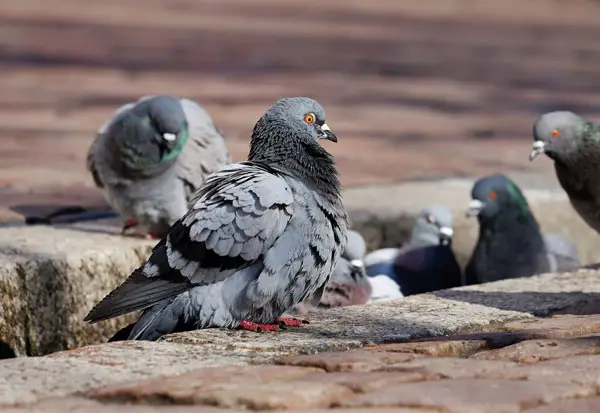
Breeding pigeons in winter requires thorough preparation as it is more stressful than other times of the year. It’s important to ensure no drafts in the coop and that fresh water is provided once or twice daily. Extra corn can also be given for heat factor, up to 50% of their total feed intake.
Ensuring your birds have a good winter routine is key, too – training hens with your best young cocks can help them stay active during this period and keep their spirits up.
Providing plenty of food and ensuring they have a safe place to stay warm are essential steps in helping pigeons prepare for winter.
If you’re interested in learning more about pigeon behavior and biology, you might find our articles on pigeon kissing and why do pigeons kill their babies helpful. Our article on pigeon kissing delves into the social behavior of pigeons, including their courtship rituals and social bonds. Meanwhile, our article on why do pigeons kill their babies explores the reasons behind this seemingly brutal behavior and its role in pigeon biology. Check them out to deepen your understanding of pigeon behavior and biology.FAQs
Here are a few questions related to where pigeons go in the winter that have been asked quite often.
To protect their young from extreme cold weather, parents of baby pigeons will keep them close and provide more food for increased warmth. Similarly, the chicks form a “thermal blanket” by congregating together; this allows them to generate enough body heat to stay cozy!
If your beloved domestic pigeon is under the weather, it may be less active and energetic than usual. Additionally, they could have difficulty breathing, decreased appetite, and extended sleep periods during the day. You should look out for these signs of a cold in birds.
Conclusion
Pigeons living in urban areas do not fly south for the winter and instead create nests in warm regions of the city. On the contrary, wild pigeons flock toward warmer locations and build nests with feathers and other items.
They gather in groups to survive harsh winter conditions while eating more than usual. It is worth noting that providing food for them during this period could influence their natural habits and disrupt their overall environment – something we should always strive to avoid.



